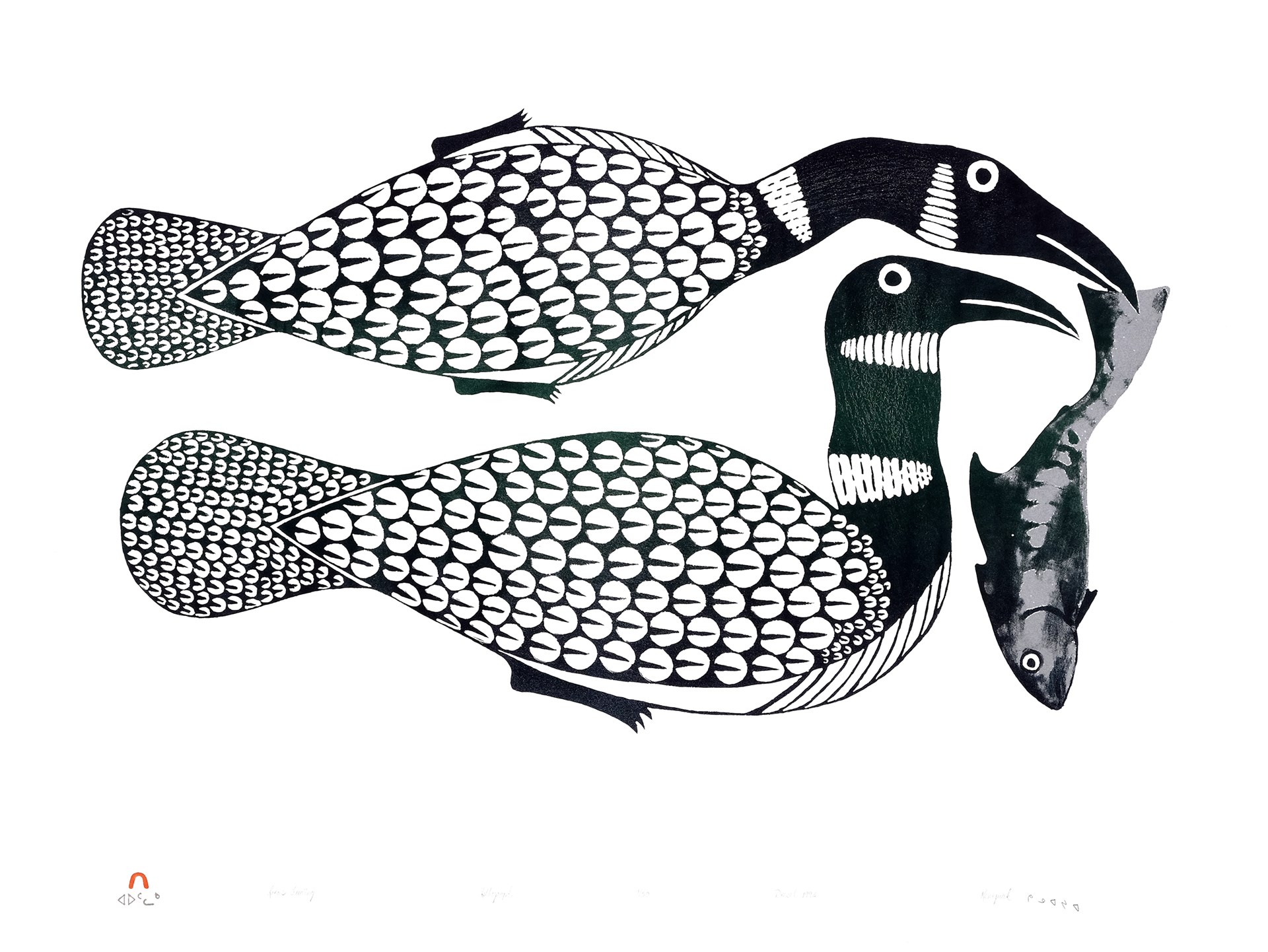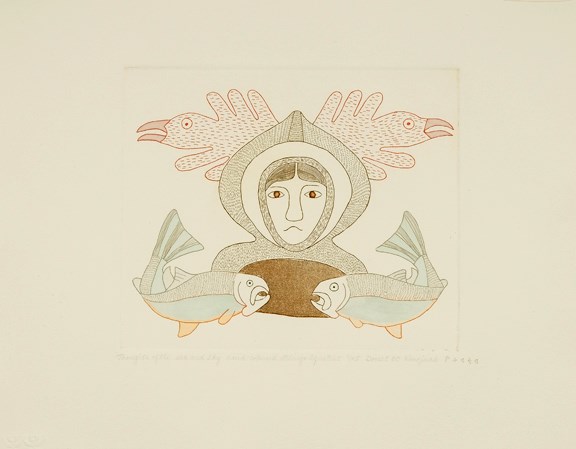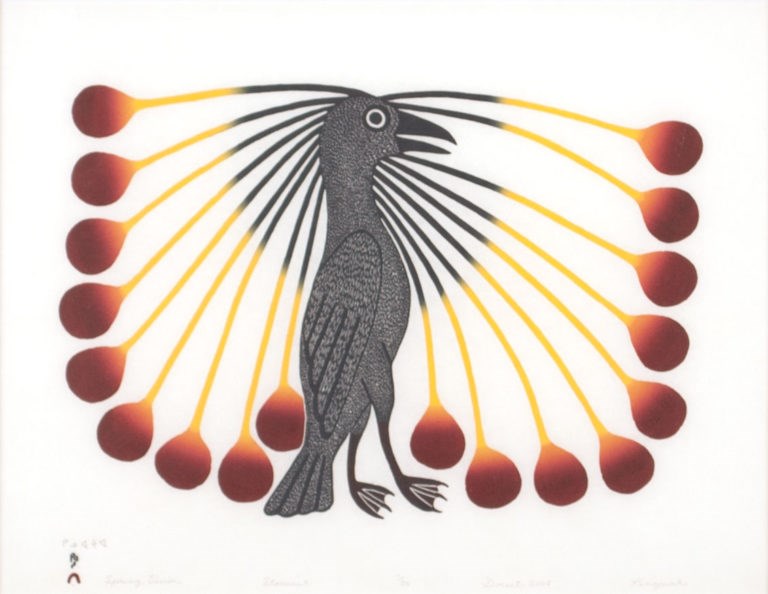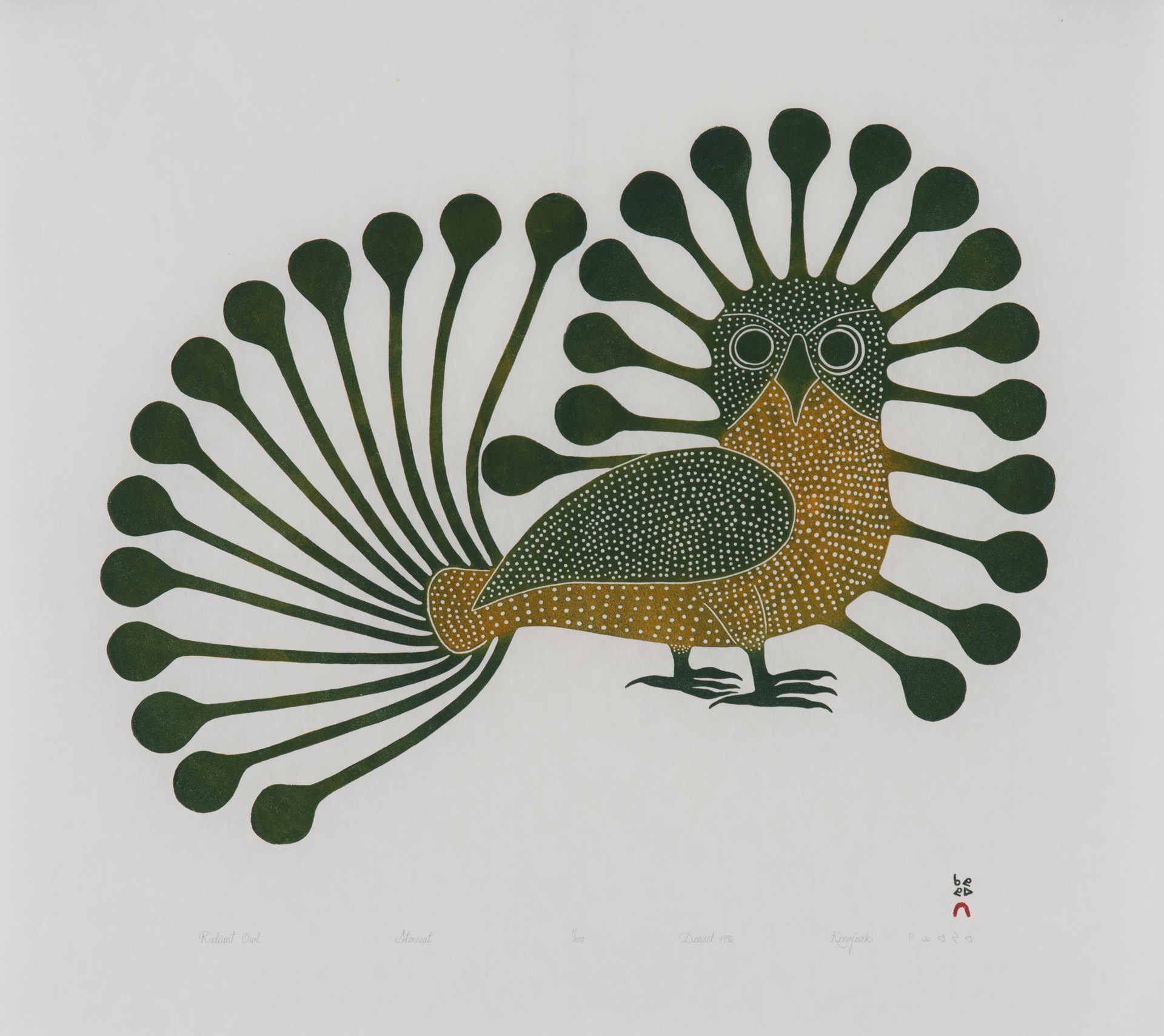Kenojuak Ashevak, Canada’s most revered Inuit artist, was born at the
south Baffin Island camp known as Ikirisaq in the fall of 1927. She grew
up travelling from camp to camp on south Baffin and Arctic Quebec. Like
many Cape Dorset artists, Kenojuak spent most of her life living on the
land in a manner not unlike that of her ancestors. Her imaginative
drawings, prints and carvings are sought the world over and reflect her
experiences and life in the North. While her imagery is varied, she is
best known for her eloquently designed animals and birds, especially the
Owl. In 1967, she received the Order of Canada. She passed away in
January 2013.

Loons Feeding, 1994
lithograph on arches 88 paper, ed. 50
full bleed: 22.5” x 30.25”
Call to inquire about availability (604) 903-3798
Lithography, or writing on stone is based on the resistance between
grease and water. The artist uses drawing and painting materials
containing grease on a limestone slab or aluminum plate to create an
image. A gum arabic mixture is applied to the composition to securely
bond the image to the plate. The surface is then dampened with water
which adheres to the non-greasy areas. Ink is applied and only adheres
to the greasy sections. Areas covered with water remain blank. The plate
is then run through a press under extreme pressure. Lithograph prints
are characterized by soft lines and rich textures.

Thoughts of Sea and Sky, 1980
hand-colored etching and aquatint, ed. 25
full bleed: 14.75” x 18”
Sold out
Etching prints are generally linear and often contain fine detail and
contours. Lines can vary from smooth to sketchy. An etching is opposite
of a woodcut in that the raised portions of an etching remain blank
while the crevices hold ink. In pure etching, a metal (usually copper,
zinc or steel) plate is covered with a waxy or acrylic ground. The
artist then draws through the ground with a pointed etching needle. The
exposed metal lines are then etched by dipping the plate in a bath of
etchant. The etchant “bites” into the exposed metal, leaving behind
lines in the plate. The remaining ground is then cleaned off the plate.
To make a print, the engraved plate is inked all over, then the ink
is wiped off the surface, leaving only ink in the engraved lines. The
plate is then put through a high-pressure printing press together with a
sheet of paper (often moistened to soften it). The paper picks up the
ink from the engraved lines, making a print. The process can be repeated
many times; typically several hundred impressions (copies) could be
printed before the printing plate shows much sign of wear.

Spring Vision, 2008
four colour stonecut print, ed. 50
full bleed: 19.5” x 26”
Sold out
Owl at Sundown, 2013
Sold out
Loons Protect the Owl, 2002
Sold out
Between Friends, 2008
Sold out

Radiant Owl, 1995
Sold out